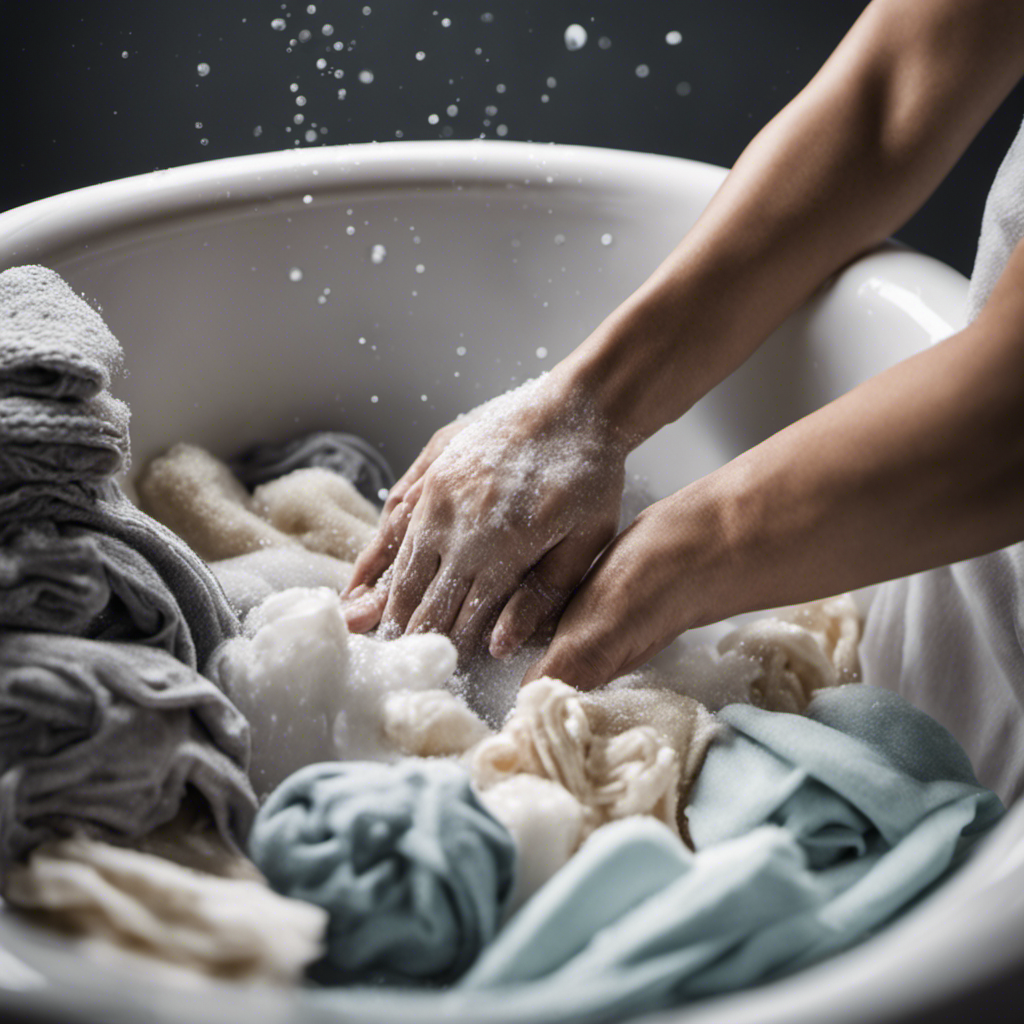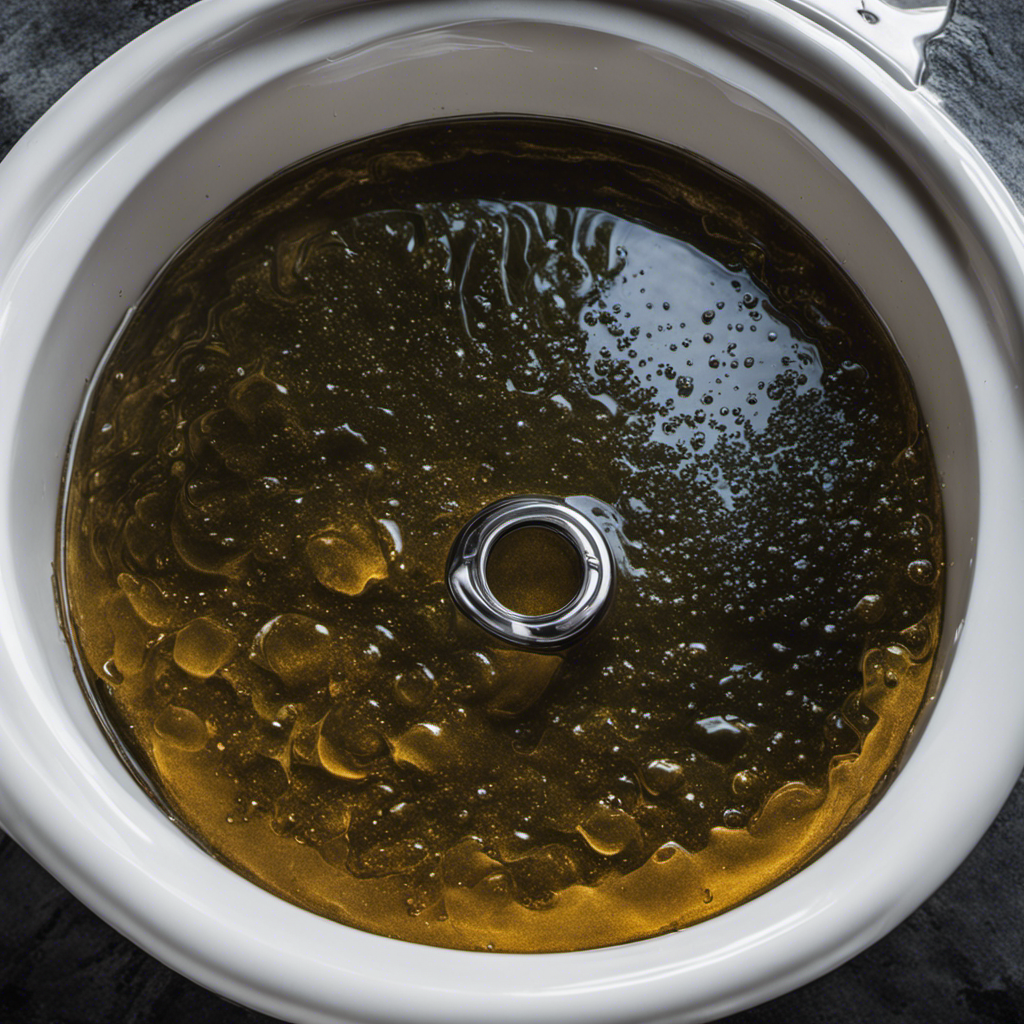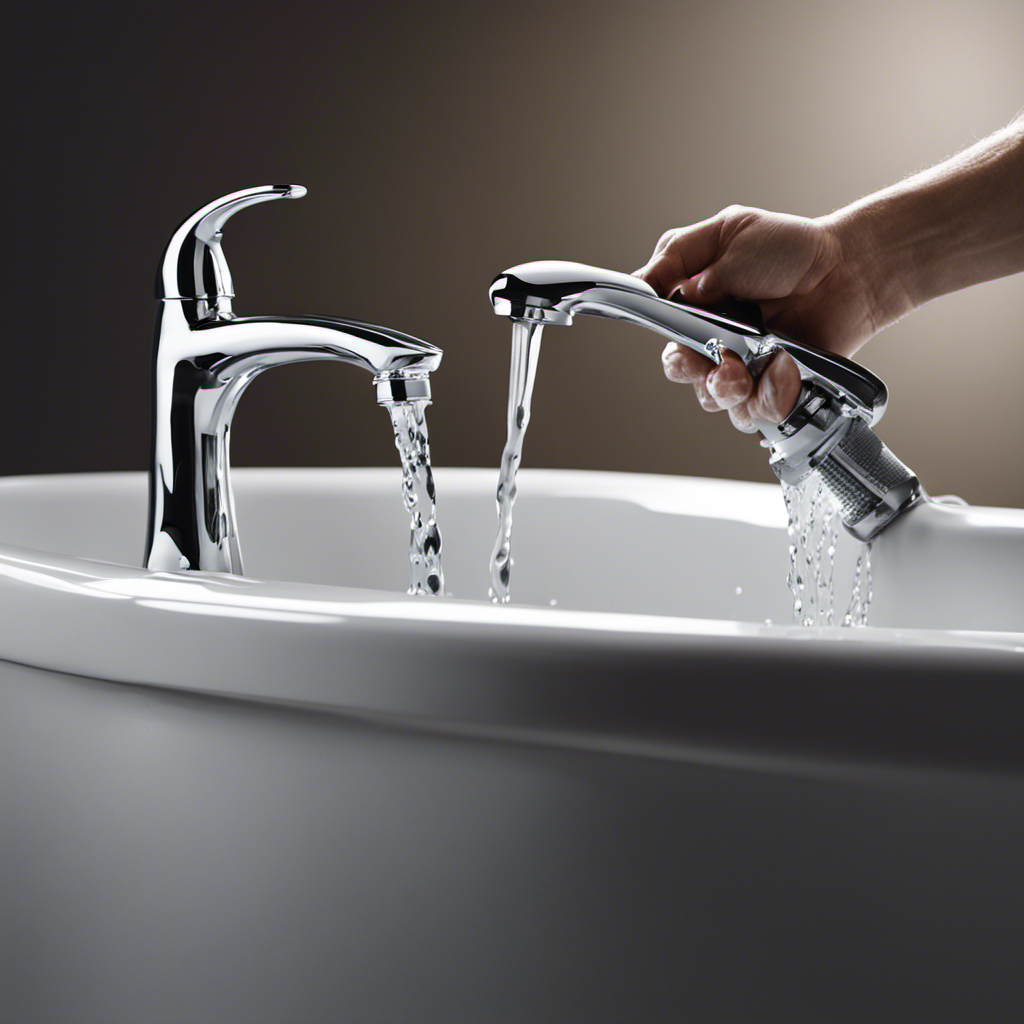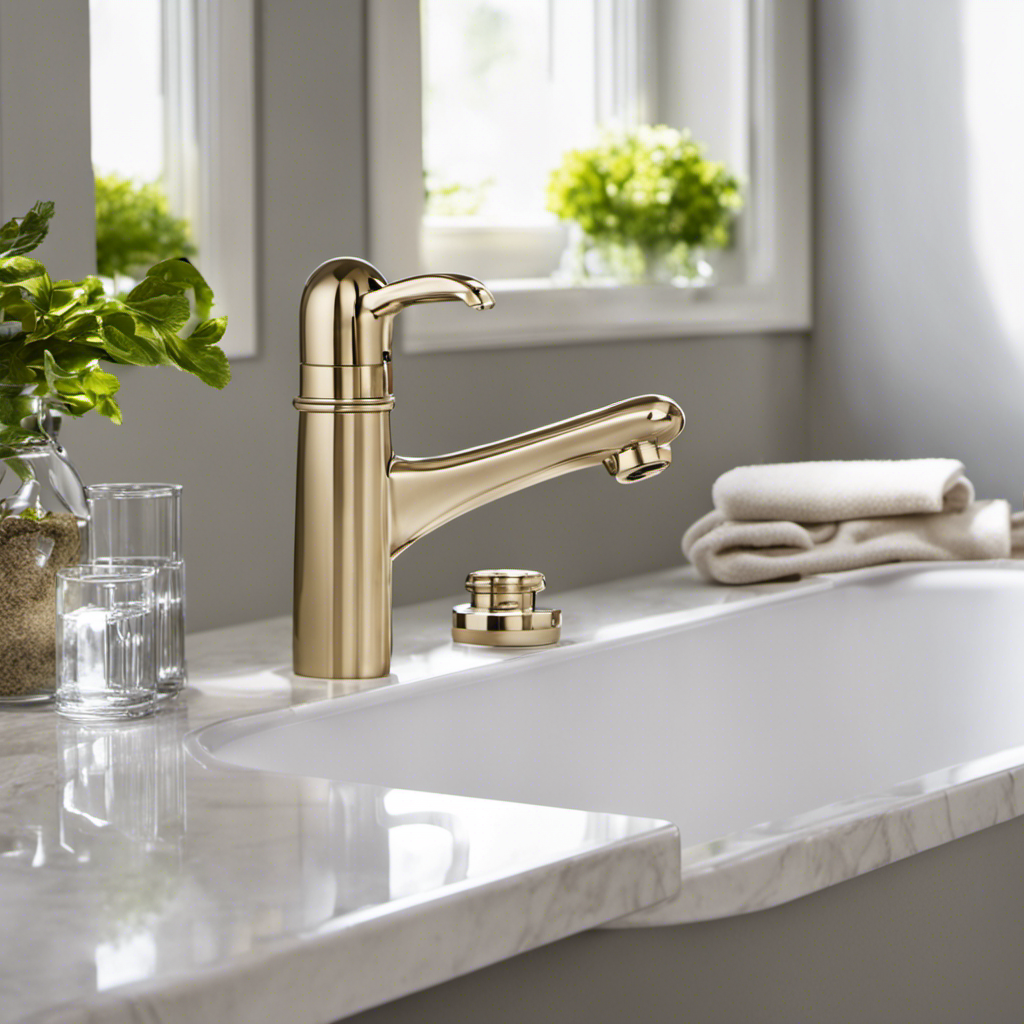You might be thinking, ‘Washing laundry in the bathtub? Isn’t that a hassle?’ But let us assure you, it’s a practical and efficient way to get your clothes clean when you’re in a pinch.
With just a few supplies and some simple steps, you’ll be able to tackle your laundry without a washing machine.
So, roll up your sleeves and get ready to learn how to wash laundry in the bathtub.
Key Takeaways
- Choose an appropriate laundry detergent
- Clear out unnecessary items from the bathtub
- Sort clothes by color and fabric type
- Fill the bathtub with enough water
Gathering the Necessary Supplies
First, gather all the necessary supplies for washing laundry in the bathtub. Start by choosing an appropriate laundry detergent that suits your needs. Look for a detergent that is gentle on fabrics but still effective in removing stains and odors. Consider using a liquid detergent as it will dissolve easily in water.
Next, maximize the bathtub space by clearing out any unnecessary items and ensuring there is enough room for your clothes to move around. You can use a laundry bag or a mesh laundry basket to keep your clothes organized and prevent them from getting tangled.
Additionally, have a clothesline or drying rack ready for when you’re finished washing. With all your supplies gathered, you’re now ready to move on to sorting your laundry.
Sorting Your Laundry
Before starting, make sure to separate your clothes according to color and fabric type. This step is crucial in order to prevent color bleeding and damage to delicate fabrics.
Here are three sorting methods to help you with your laundry organization:
-
Sort by color: Separate your clothes into darks, lights, and whites. This will prevent dark colors from transferring onto lighter ones and keep your whites bright.
-
Sort by fabric type: Divide your clothes into categories such as cotton, denim, synthetic, delicate, and wool. This will ensure that each fabric is treated properly and washed at the appropriate temperature.
-
Sort by soiling level: Separate heavily soiled items from lightly soiled ones. This will allow you to adjust the wash cycle and detergent amount accordingly.
Pre-Treating Stains
To effectively remove stains, you’ll need to pre-treat them before washing. When it comes to removing tough stains, natural stain removers can be a great option.
One effective natural stain remover is vinegar. Simply mix equal parts vinegar and water, then apply it directly to the stain. Let it sit for a few minutes before washing as usual.
Another natural option is lemon juice. The citric acid in lemon juice can help break down tough stains. Squeeze fresh lemon juice onto the stain and let it soak for a few minutes before washing.
Baking soda is also a powerful natural stain remover. Make a paste with water and apply it to the stain, then let it sit before washing.
These natural stain removers can be a game-changer when it comes to tackling stubborn stains.
Filling the Bathtub With Water
Once the water is running, you’ll want to make sure the bathtub is filled to the desired level. This step is crucial when handwashing your clothes in the bathtub.
Here are three reasons why filling the bathtub with water is important for effective handwashing:
-
Proper water level: Fill the bathtub with enough water so that your clothes can move freely. Having the right water level ensures that the detergent can evenly distribute and penetrate the fabric, resulting in a more thorough clean.
-
Soaking power: By filling the bathtub, you can allow your clothes to soak for a longer period. Soaking helps to loosen dirt and stains, making them easier to remove during the washing process. This is especially beneficial for heavily soiled garments.
-
Water conservation: Handwashing your clothes in the bathtub allows you to conserve water compared to using a washing machine. You can reuse the water for multiple loads or for other household tasks, reducing water wastage and benefiting the environment.
Adding Detergent to the Water
When adding detergent to the water in your bathtub for laundry, it’s important to use the proper detergent measurement to ensure optimal cleaning results.
Choosing the right detergent for the specific type of fabric and stain is crucial in achieving effective cleaning.
Additionally, dissolving the detergent effectively in the water will help evenly distribute it throughout the laundry and prevent any residue or clumps from remaining on the clothes.
Proper Detergent Measurement
Make sure you’re using the right amount of detergent when washing laundry in the bathtub. Proper detergent measurement is crucial to achieving clean and fresh-smelling clothes. Here are three discussion ideas to consider:
-
Different detergents available:
There is a wide range of laundry detergents to choose from, such as powder, liquid, and pods. Each type has its own advantages and suitability for different fabrics or washing methods. -
Importance of proper detergent measurement:
Using too little detergent may result in clothes not being cleaned thoroughly, while using too much can leave residue on your garments. It is important to follow the manufacturer’s instructions or use measuring cups to ensure the proper amount of detergent is used. -
Finding the right balance:
Experiment with different detergents and amounts to find the perfect combination for your laundry needs. Consider factors such as water hardness, fabric type, and the level of dirtiness to determine the optimal detergent measurement for a successful laundry experience.
Choosing the Right Detergent
To choose the right detergent, consider factors such as fabric type and water hardness. When it comes to choosing eco-friendly options, comparing liquid and powder detergents can help you make an informed decision. Liquid detergents are convenient and easy to use, while powder detergents are often more cost-effective and have a longer shelf life. To help you visualize the differences between the two, here’s a comparison table:
| Liquid Detergent | Powder Detergent | |
|---|---|---|
| Pros | Convenient to use | Cost-effective |
| Effective in cold water | Longer shelf life | |
| Cons | Can be more expensive | May leave residue |
| May require more water | Can clump if not stored properly |
Dissolving Detergent Effectively
Now that you have chosen the right detergent, let’s focus on dissolving it effectively in the bathtub. This step is crucial to ensure that your laundry gets properly cleaned. Here are three key points to consider:
-
Water temperature: Fill the bathtub with warm water. Warm water helps the detergent dissolve more easily and improves its cleaning power. Avoid using hot water, as it may damage delicate fabrics or cause colors to fade.
-
Pre-dissolving: Before adding your clothes, pour the recommended amount of detergent into the bathtub and agitate the water to create a soapy solution. This ensures that the detergent is evenly distributed throughout the water.
-
Stirring occasionally: While your clothes soak in the soapy water, give it a stir every now and then to keep the detergent properly dissolved and prevent it from settling at the bottom of the tub.
Submerging and Agitating the Clothes
First, you’ll need to fill the bathtub with warm water, ensuring that the clothes are fully submerged. This will help to loosen dirt and stains from the fabric.
Once the water level is high enough, add your laundry detergent, making sure to dissolve it completely before adding the clothes.
Agitating the clothes is an important step in the washing process. You can use your hands or a long-handled wooden spoon to gently stir the water, ensuring that every garment is getting the attention it needs. For heavily soiled items, you may want to use a more vigorous agitating technique, such as rubbing the fabric together.
After agitating, allow the clothes to soak in the soapy water for about 15-30 minutes. This soaking time will help to further loosen dirt and stains before rinsing.
Rinsing and Wringing Out the Clothes
Once the clothes have finished soaking, gently wring them out to remove excess water before rinsing. This step is crucial to ensure that your clothes are properly cleaned and ready for the next phase of the laundry process.
Here are three effective rinsing techniques and tips for wringing out your clothes:
-
Rinse thoroughly: Fill the bathtub with clean water and agitate the clothes to remove any remaining detergent. Make sure to rinse each garment individually to ensure a thorough clean.
-
Use cool water: Cold water helps to preserve the colors and fabric of your clothes. It also helps to remove any remaining soap residue.
-
Wring with care: To effectively wring out your clothes, start by rolling them up tightly and squeezing out the water. Avoid twisting or pulling the fabric too hard to prevent damage.
Drying Your Laundry
To dry your clothes, you have two options: hang them up on a clothesline or use a dryer. However, air drying your clothes using a clothesline has its own benefits.
First and foremost, air drying is more environmentally friendly. It saves energy and reduces your carbon footprint. Additionally, air drying helps preserve the quality of your clothes. It minimizes shrinkage and damage caused by high heat.
When using a clothesline, there are a few things to keep in mind. Make sure to evenly distribute the weight of your clothes to prevent stretching or sagging. Choose a location that receives ample sunlight and airflow for faster drying. Before hanging, give your clothes a good shake to remove any excess water and prevent wrinkles.
Tips for Efficient Bathtub Laundry Washing
When you’re doing your laundry in the bathtub, make sure to use cold water to save on energy and reduce your utility bills. Efficient laundry techniques are key to maximizing cleaning effectiveness while minimizing resource usage. Here are three tips to help you wash your laundry efficiently in the bathtub:
-
Use a laundry detergent specifically designed for handwashing. These detergents are formulated to work well in cold water and require less water for rinsing, saving both energy and water.
-
Pre-treat stains before washing. Apply a stain remover or a bit of laundry detergent directly to the stain and gently rub it in. Let it sit for a few minutes before washing to help lift the stain more effectively.
-
Agitate the laundry by hand. Swirl the clothes around in the water vigorously to create friction and help loosen dirt. Be sure to pay extra attention to heavily soiled areas or stains.
Frequently Asked Questions
Can I Use Regular Soap Instead of Laundry Detergent?
You can use regular soap, like hand sanitizer or dish soap, instead of laundry detergent. Just make sure to use a small amount and rinse thoroughly to avoid residue on your clothes.
Is It Necessary to Wear Gloves While Washing Laundry in the Bathtub?
It’s not necessary to wear gloves while washing laundry in the bathtub, but it’s recommended for protection. Proper hand washing techniques are crucial to prevent the spread of germs and ensure cleanliness.
How Long Should I Let the Clothes Soak in the Water Before Agitating Them?
To properly agitate clothes during handwashing, let them soak in water for about 15-30 minutes before gently swishing them around. This helps loosen dirt and stains. Additionally, adding vinegar or salt can prevent color bleeding during soaking.
Can I Use Hot Water to Wash All Types of Clothes in the Bathtub?
Using hot water to wash clothes in the bathtub can be effective for most types of fabric. It helps to remove stains and kill bacteria. Plus, the convenience of washing in the bathtub offers benefits like saving water and energy.
Is It Possible to Wash Delicate Fabrics Like Silk or Lace in the Bathtub?
Yes, it is possible to wash delicate fabrics like silk or lace in the bathtub. When washing delicate fabrics by hand, use gentle techniques like soaking, swishing, and avoiding harsh detergents or scrubbing.
Conclusion
In conclusion, washing your laundry in the bathtub can be a practical and efficient way to get your clothes clean. By following the step-by-step guide outlined in this article, you can ensure that your laundry is washed thoroughly and effectively.
Did you know that according to a recent survey, nearly 25% of people prefer to wash their clothes in the bathtub? This method not only saves water but also allows for a more hands-on approach to laundry.
So why not give it a try and see the difference it can make!










